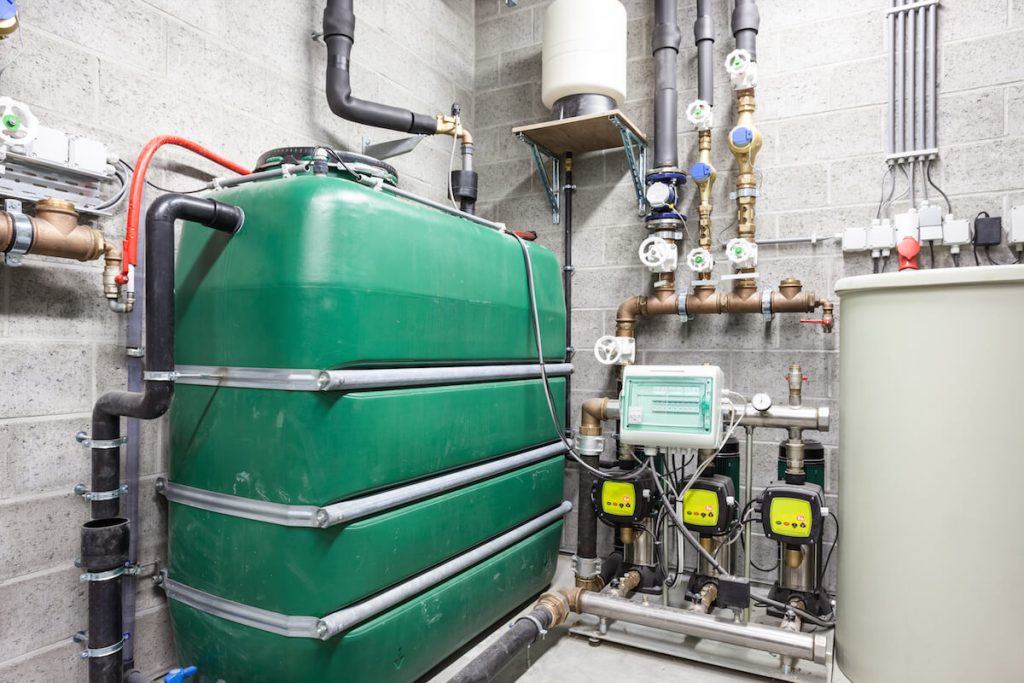What is a Metering Pump On board a Ship?
Metering pump, as the name suggests, is a type of pump which is used on a ship not only to transfer a liquid from one place to another but to supply it in a precise volume. Metering pump can be adjusted to provide different flow rates. They are generally used when the precision of volume to be delivered is very important.
The marine application of metering pump is in the form of chemical dosing pumps, which is used to transfer precise amount of dosing chemicals, especially in boilers. They are also used for dosing chemical additives to protect corrosion in the cooling water system. It is to note that the amount of dosing has to be precise. Overdosing or under-dosing may cause corrosion and other damages inside the boiler, which may end up in heavy repairs.
The metering pump is connected to the system in which the chemicals are injected with the help of valve in the pipeline. The pressure produced by this pump should be higher than the pressure in the pipeline, or else there will not be any dosing and the level of chemicals in the dosing tank will be the same.
The metering pumps consist of a small motor, which moves the plunger, in and out of the barrel, to provide pressure in the system. The check valves are provided in the suction and discharge side of the pump. A plunger type metering pump is a positive displacement pump and is suitable to use in a high-pressure system.

As this type of pump is frequently used to dispense concentrated and highly corrosive liquids, considerable care must be taken to ensure that the materials used in construction, particularly those of parts in direct contact with the liquid, are capable of resisting chemical reaction and corrosion.
Common pump head materials
- PVC
- Kynar
- stainless steel
- cast iron (for tube diaphragms)
Advantages of mechanical plunger type
- As plunger pumps, they are reliable and easy for maintenance and with the possibility to have flushing or leakage recovery system.
- They are more robust
- Can be used in high-temperature surroundings
- Major Disadvantage of such pump is there tendency to clog.
Another type of metering pump, which can be used in the low-pressure system, is diaphragm type, which requires no gland and has very less chance of leakage.
Advantages of Diaphragm metering pump
- leak proof design
- less maintenance cost
- better precision
These pumps are generally not used in high-pressure systems and if they are electronically controlled, they have to be installed in low-temperature surroundings, as high temperature will hamper the electronic controls.
Latest Design
The latest addition to the development of metering pump is the use of the magnetic sealless pump. A magnetic drive for a pump was there for a long time but the integration of this design in a metering pump system has been a life saver when supplying dangerous or environmentally unfriendly fluids. This is because magnetic drive sealless pump does not have a seal and therefore will not leak or react with the supplied liquid.
Points to Note
Most metering pumps are positive displacement type having self-priming feature and can handle high suction lift. For a positive displacement pump, the relief valve has to be provided in the discharge line. The reason for this is that the liquid is incompressible and there is no space in the barrel to accommodate the pressed liquid. A high pressure is created if the discharge valve is closed or if there is any other restriction/blockage in the system. The high pressure might completely damage the pipes connected. For this reason, a relief valve is connected to the discharge line and is set at a particular pressure. When the pressure rises, the relief valve opens and relieves the extra pressure, thus protecting the pipes.
Generally, metering pumps are connected to the dosing pumps and the whole unit is known as the dosing unit. The relief valve is connected to the dosing pump, which releases the excess pressure back to the dosing tank.
Types of metering pump
Mechanical type
The mechanism of this type of metering pump is an internal worm gear, fully oil bath lubricated with the possibility to be coupled with others independently from the size and stroke number to obtain the multi-heads unit. The dosing rate is fully adjustable via a manually controlled eccentric cam mechanism with spring return. Stroke adjustment can be carried with the pump at rest or in operation and it can also be automatic through automatic actuator driven by 4-20 mA, servo motor. They can also be fitted with pulsation dampeners.
Electronic type
Popularly used for small diaphragm metering pumps. The discharge of the precise amount of liquid is achieved by an electromagnetic drive mechanism (solenoid), which is connected to a diaphragm. When the solenoid is pulsed by the control circuit it displaces the diaphragm, which, through the use of check valves, moves the fluid out the discharge under pressure. When the solenoid is de-energized it returns the diaphragm and pulls more fluid into the pump head and the cycle repeats.
Working – Metering Pump
As the plunger moves away from the suction valve, a vacuum is created inside the pump because of which makes liquid flow inside the pump. This closes the check valve closes and the plunger again starts moving towards the valves. The discharge valve then opens and supplies the liquid to the system.
The seal arrangement is provided at the end of the plunger i.e. towards the motor side so that no leak should take place.
Altering the movement of the plunger inside the barrel can alter the volume of the liquid supplied. A small knob provided on the pump and which thus allows adjusting the percentage of liquid supplied generally does this.
When the knob is turned to increase or decrease the flow rate, it alters the movement of the plunger, which means that it moves less in the plunger rather than along the full length of the plunger. Because of this the liquid enters the chamber and changes the plunger position along with the flow rate.
Do you have info to share with us ? Suggest a correction
Latest Shipboard Guidelines Articles You Would Like:

About Author
An ardent sailor and a techie, Anish Wankhede has voyaged on a number of ships as a marine engineer officer. He loves multitasking, networking, and troubleshooting. He is the one behind the unique creativity and aesthetics at Marine Insight.
Subscribe To Our Newsletters
By subscribing, you agree to our Privacy Policy and may receive occasional deal communications; you can unsubscribe anytime.
















I am a Marine Engineer (4th Class Officer) and Have never heard of such a pump.
Based on what you have discussed, the metering pump is used on a ship not only to transfer a liquid from one place to another but to supply as well. Please correct me if am wrong or just did not see it in your post, can this also be used by land? Let me know if I was unable to get the information correctly, thanks.